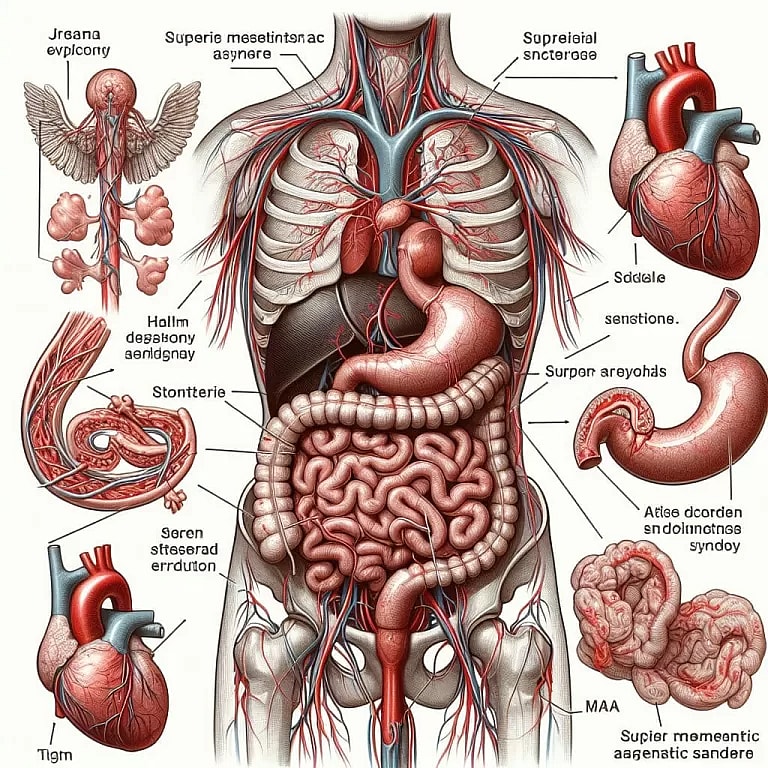Anorexia Nervosa Restricting Type: A Comprehensive Guide
All forms of anorexia nervosa feature behaviors of calorie restriction. When you primarily manage your weight through dieting, fasting, and excessive exercise, you may be living with restrictive-type anorexia nervosa.

Eating disorders involve long-term eating patterns that affect your physical, psychological, and social functions. Eating disorders often stem from distressing thoughts and feelings and can involve rigid and ritualistic behaviors that resemble addiction.
Anorexia nervosa (AN) is one of a handful of eating disorder diagnoses. Around 4% of females and 0.3% of males have experienced AN at some point in their lives, and it can affect people of all ages and genders.
When AN behaviors center around severe food limitations and excessive exercise, it’s known as restrictive type anorexia nervosa or anorexia nervosa restricting type (AN-R).
Are there subtypes of anorexia nervosa?
AN is broken down into two subtypes by the Diagnostic and Statistical Manual of Mental Disorders, 5th edition, text revision (DSM-5-TR), a clinical guidebook used internationally in the assessment of mental health conditions.
These subtypes are:
- restricting type (AN-R)
- binge-eating/purging type (AN-BP)
Both subtypes of AN include the core features of energy restriction, fear of weight gain, and distorted body image. What sets them apart are the primary behaviors a person uses to achieve weight loss.
In AN-R, behaviors are focused on food restriction and excessive physical exertion. In AN-BP, food and calorie restriction is still present, but it’s intermixed with episodes of binge eating and purging behaviors, like self-induced vomiting and laxative misuse.
What is the anorexia-nervosa-restricting type?
AN-R is one of two subtypes within the diagnosis of AN.
Subtypes allow clinicians to add specificity to your diagnosis, which can help when developing treatment plans and individualized care.
Receiving an AN-R diagnosis means no binging or purging behaviors have been present within the last 3 months, and weight loss habits mainly involve dieting, fasting, or excessive physical exercise.
Can dieting, fasting, and exercise be a part of AN-BP?
Energy restriction methods such as excessive exercise, dieting, and fasting can be seen in all forms of AN. A diagnosis of AN-BP simply means binging and purging behaviors are present.
Due to the high potential for cross-over symptoms between types, the DSM-5-TR notes AN subtypes should only be used to describe current symptoms, not the long-term course of AN.
Was this helpful?
AN-R symptoms
Symptoms are feelings, sensations, and health changes experienced by the person living with a condition. They aren’t always the same as signs of a condition that others may be able to see.
Symptoms of AN-R may include:
- significant weight loss
- body weight below what’s standard for your age and height
- intense fear of weight gain or of having overweight
- distorted perception of body size and shape
- preoccupation with food and weight
- poor concentration
- hair loss
- brittle nails
- fatigue
- temperature intolerance
- irregular menstrual cycles
- bowel changes
- bone thinning
- low blood pressure
- mood swings
- organ damage or failure
Signs a loved one is experiencing AN-R
Leslee Marcom, regional clinical director at the Eating Recovery Center in Denver, Colorado, explains that recognizing AN-R can be tricky. Signs aren’t always visually apparent or obvious.
“People living in larger bodies may also experience restrictive anorexia, and a patient with anorexia may appear ‘healthy’ when they are malnourished,” she says. “That’s why understanding the warning signs and symptoms of anorexia is so important.”
A loved one may be experiencing AN-R when they:
Diagnostic requirements for AN-R
In the United States, doctors use criteria outlined in the DSM-5-TR to diagnose AN-R.
According to these criteria, an AN diagnosis of any type may be given when the following three defining features are met:
1. Energy restriction leading to low body weight
Energy intake is restricted to below functional requirements in AN and leads to significantly low body weight in relation to age and height standards.
In children, this can look like a failure to make developmentally appropriate weight rather than an experience of weight loss.
2. Intense fear of weight gain
AN features an intense fear of gaining weight or being overweight that doesn’t go away with weight loss. According to the DSM-5-TR, preoccupation with weight tends to increase even as weight decreases.
3. Body image disturbance
Both body image experience and its significance are distorted in AN. This means how you view your body and how you relate health to weight are not aligned with reality.
Many people living with AN view themselves as overweight even though they are underweight, or they may fixate on particular body parts they perceive as “fat.”
People experiencing AN will also not be able to acknowledge the health risks associated with malnutrition and low body weight.
The specifiers
Once a diagnosis of AN has been made, your doctor will add specifiers, including subtypes, to reflect your individual experience of AN.
Specifiers in AN include subtypes of AN-R or AN-BP, as well as specifiers for severity, which are based on your calculated body mass index (BMI).
- Mild: BMI of 17 or greater
- Moderate: BMI between 16 and 16.9
- Severe: BMI between 15 and 15.9
- Extreme: BMI under 15
Risk factors for developing AN-R
The exact causes of AN aren’t clear, though certain factors may increase your chances of developing this eating disorder. In AN, the risks are the same across subtypes.
“There is no single cause of eating disorders,” Marcom explains. “Anorexia stems from a complex interplay between multiple factors, including genetic, environmental, sociocultural, and psychological.”
She indicates this includes variables such as:
- family history of eating disorders or mental health concerns
- perfectionism or impulsivity traits
- traumatic experiences or trauma-related symptoms
- support system conflict
- emotion regulation challenges
- low self-esteem/self-efficacy
- depression
- anxiety
- cultural norms about weight
- social media/societal expectations of the perfect body
Other factors that may increase your risk of developing AN-R include:
- personal history of other mental health conditions
- a history of dieting
- living with a chronic illness like type 2 diabetes
- being the target of bullying
- experiencing a physiological state known as low energy availability (LEA)
- having low cognitive flexibility (i.e., the ability to smoothly transition between tasks)
Treatment for anorexia nervosa restricting type
AN treatment usually involves a multidisciplinary team of health professionals. Your primary doctor will work closely with mental health professionals and nutrition experts to ensure they cover all physical and psychological aspects of care.
“Treatment for both subtypes is very similar and, in most cases, sustainable recovery begins with nutritional rehabilitation and weight restoration,” says Marcom.
According to a report from 2022, psychotherapy is an essential component for the treatment of AN. In adolescents, the gold standard approach is family therapy, which makes caregivers active participants in a child’s recovery process.
In adults, cognitive behavioral therapy (CBT), including specific formats like exposure and response prevention (ERP) and acceptance and commitment therapy (ACT) can help challenge unhelpful beliefs about weight and food while addressing the source of psychological distress.
While no medications directly treat AN, your doctor may prescribe medications to address co-occurring symptoms like depression.
If symptoms of AN are persistent despite treatment, your healthcare team might recommend a neuromodulation procedure, like deep brain stimulation (DBS), to help regulate neural signals in your brain that contribute to AN symptoms.
Takeaway
Anorexia nervosa restricting type (AN-R) is one of two subtypes of AN. It features the classic symptoms of AN without any binging or purging behaviors. In AN-R, weight loss methods typically involve fasting, dieting, and excessive exercise.
Regardless of subtype, AN is treatable. Nutritional care, physical monitoring, and psychotherapy work together to bring your body back to functional levels while also addressing the underlying causes of AN.
Q&A
1. What are the two subtypes of anorexia nervosa (AN)?
2. How is AN-R diagnosed?
AN-R is diagnosed based on criteria in the DSM-5-TR, which includes three main features:
Doctors will also consider the severity of the condition based on the body mass index (BMI) [4].
3. What are some symptoms of AN-R that might not be noticeable to others?
4. What are some risk factors for developing AN-R?
AN-R risk factors are complex and include:
5. How is AN-R treated?
Treatment typically involves a team of healthcare professionals and focuses on both physical and psychological aspects. Common treatments include:
**Question & Answer on Everything You Need to Know About Anorexia Nervosa Restricting Type**
**What is Anorexia Nervosa Restricting Type (AN-R)**
AN-R, a subtype of anorexia nervosa, involves an intense fear of gaining weight and a preoccupation with body image. Individuals with AN-R restrict food intake to an abnormally low level, causing severe calorie deficit and malnutrition.
**Symptoms of AN-R:**
* **Intense fear of weight gain:** Avoids eating, severely restricts calories, or engages in excessive exercise.
* **Body image disturbance:** Distorted perception of body size or shape, feeling overly fat even when underweight.
* **Restricting food intake:** Maintains a very low calorie diet, often skipping meals, fasting, or choosing only safe foods.
* **Extreme weight loss:** Body mass index (BMI) below 17.5 kg/m2.
* **Amenorrhea:** Cessation of menstrual periods in females.
* **Psychological symptoms:** Anxiety, depression, obsessive-compulsive behavior, social withdrawal.
* **Physical complications:** Malnutrition, electrolyte imbalances, heart problems, osteoporosis, infertility.
**Causes of AN-R:**
* **Genetics:** Family history of eating disorders increases risk.
* **Environmental factors:** Pressure to be thin from society or culture, traumatic life events.
* **Psychological factors:** Low self-esteem, perfectionism, difficulty coping with emotions.
**Diagnosis of AN-R:**
* **Physical exam:** Assess weight, height, BMI, vital signs, and physical complications.
* **Psychological evaluation:** Explore body image concerns, eating habits, and underlying psychological issues.
* **Medical tests:** Blood tests, electrocardiogram, bone density scan to detect physical health problems.
**Treatment for AN-R:**
* **Medical care:** Address physical complications, provide nutritional support, and monitor vital functions.
* **Therapeutic approaches:** Cognitive Behavioral Therapy (CBT), Family-Based Therapy (FBT), Dialectical Behavior Therapy (DBT), and Motivational Interviewing (MI).
* **Medication:** Antidepressants or anti-anxiety medications may be prescribed to alleviate psychological symptoms.
* **Supportive care:** Provide emotional and practical assistance to individuals and their families during recovery.
**Recovery from AN-R:**
Recovery is a gradual and challenging process that requires ongoing support. Goals include:
* **Restoring a healthy weight:** Gradually increase calorie intake under medical supervision.
* **Challenging body image distortions:** Recognise and change negative thoughts about size and shape.
* **Developing healthy eating patterns:** Learn balanced and nutritious eating habits.
* **Improving psychological well-being:** Address underlying issues, build self-esteem, and cope with stress.
**Prevention of AN-R:**
* **Educating about eating disorders:** Increase awareness of AN and its warning signs.
* **Promoting healthy body images:** Challenge unrealistic beauty standards and encourage positive media representation.
* **Supporting mental health:** Encourage open discussion about mental health and provide resources for support.
**In conclusion, Anorexia Nervosa Restricting Type is a serious eating disorder that requires professional intervention. Early identification, treatment, and support are crucial for recovery and the prevention of long-term health consequences.**








This is a very well written article. It covers all the important aspects of anorexia nervosa restricting type, including the symptoms, causes, and treatment. I would highly recommend this article to anyone who is interested in learning more about this eating disorder.